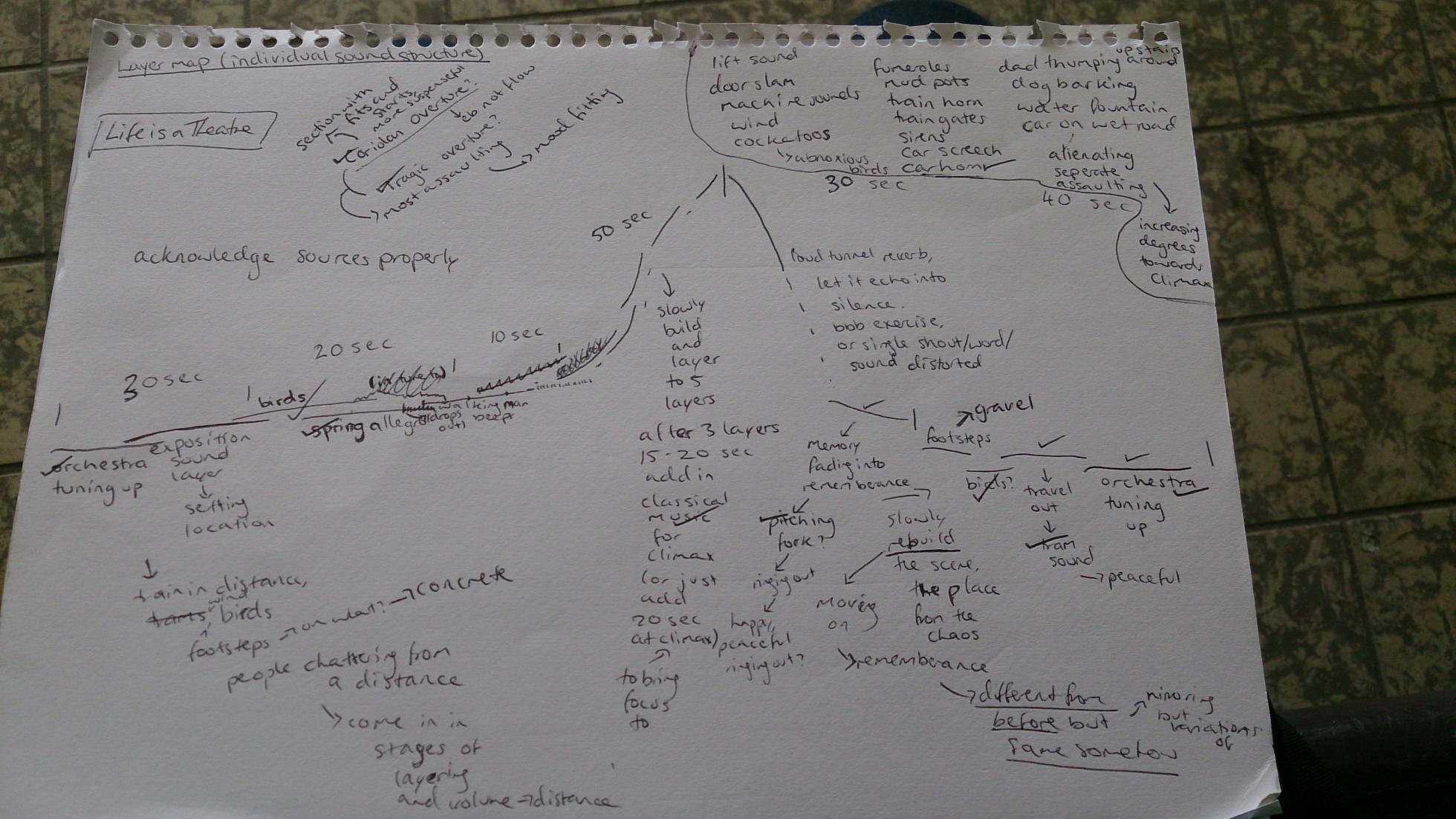During the process of creating these pieces, in particular, the ‘Life is Theatre’ piece, it was very interesting seeing how the different timbres of each sound allowed for an emotional flow and progression, while the individual sounds themselves gave off distinctive connotations and painted a different narrative in each person’s head, as each person focused on different sounds to paint a story.
When I showed my first rough edit of the piece to a small group of my peers and Kyla, I asked them whether or not they felt it achieved the kind of emotional tones and qualities I wanted it to and then, for some reason they told me what they each thought the story was. When I was searching for my sounds I only thought about the unique sounds in my day to day life that had a unique emotional timbre which I could use to progress the to the climax of the piece. I didn’t think about the connotations of each sound, as the piece was meant to be purely experimental and emotional, whereas, because each sound used had a specific connotative and semiotic meaning to each individual, all they were searching for WAS the meaning and the story behind each sound. Some people felt it was An ordeal with a knife, made worse by an ambulance stuck in traffic.
When I went before the crit panel earlier today, both of the panel members had interesting things to say about my piece and both thought it was successful on the emotional front, and that the story behind it was a ‘public transport nightmare’, but Miyuki also pointed out some interesting ways to improve my piece, through pacing, rhythm and smoother flow from sound to sound. All of which I fully agree with and can hear in my piece now. I really want to work more with pacing and rhythm, working sounds in time with other sounds as well as emotions and feeling able to manipulate more as opposed to seeing how the cards drop, then just leaving them there. I also love the idea that through connotation and convention of classical storylines (cliche if you will), people are constantly anticipating and expecting repetition within the stories they see and hear, expecting familiarity and a cohesive story filled with meaning to develop, so they search for it until they find it. The constant search for meaning. In sound this is the development of semiotic cues, creating a world which we recognise and understand, which can oh so easily be destroyed with but one stray sound.


